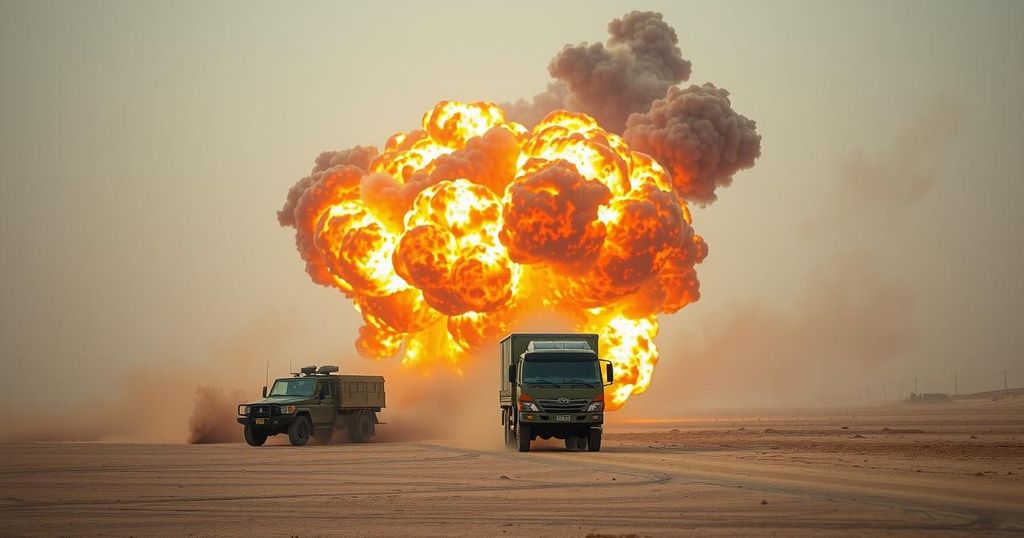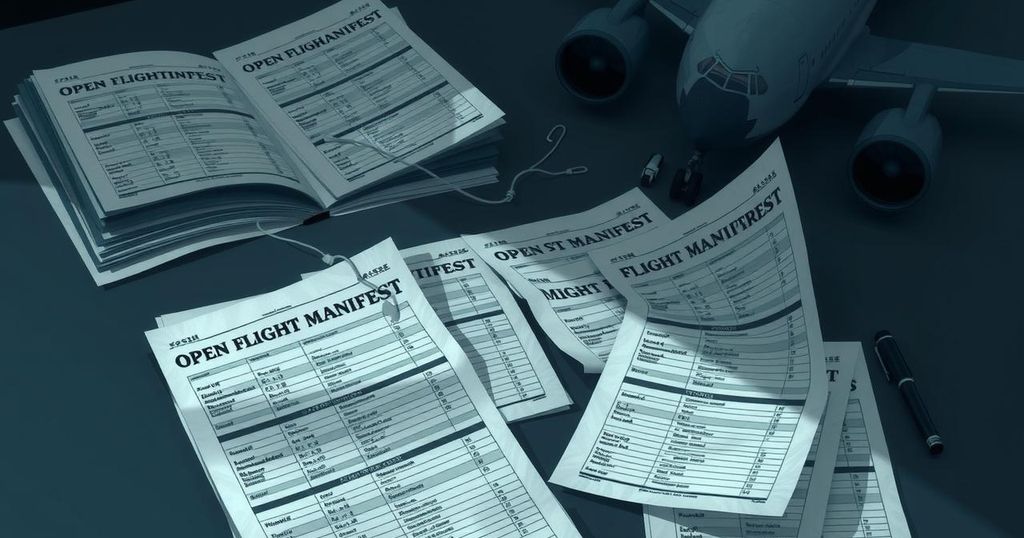Trump Celebrates U.S. Strike Against Houthi Forces Amid Ongoing Maritime Threats
Donald Trump praised a U.S. drone strike against Houthi terrorists in Yemen, highlighting ongoing challenges faced by U.S. military in curbing their attacks on shipping. The Houthis’ resilience in disrupting maritime commerce raises concerns, as operational efforts have not successfully stabilized key shipping lanes despite coalition interventions.
Former President Donald Trump recently celebrated a drone strike conducted by U.S. Central Command (CENTCOM) against Iran-backed Houthi terrorists in Western Yemen. He shared video footage of the strike on his Truth Social page, expressing satisfaction over the successful operation. Trump remarked, “These Houthis gathered for instructions on an attack. Oops, there will be no attack by these Houthis! They will never sink our ships again!”
The dramatic video captured from above illustrated a group of Houthis gathered before a massive explosion engulfed them, resulting in significant casualties. Though specific timing for the strike was not provided, the U.S. has actively engaged in efforts to weaken the Houthi group since the conclusion of the Biden administration.
In recent months, the Houthis have intensified their attacks on Western commercial vessels in the Red Sea, primarily as a response to Israel’s military actions in Gaza. Such hostilities have severely impacted commercial shipping routes, particularly through the Suez Canal—a critical maritime artery that facilitates about 30 percent of global container traffic. As a result, ships have been forced to alter their routes, significantly increasing travel times.
Despite U.S. military actions against the Houthis over the past year, their ability to disrupt global shipping remains intact, prompting further military interventions. In December 2023, Operation Prosperity Guardian was initiated, involving a coalition of Western forces aiming to intercept Houthi threats. However, continued attacks led to the U.S. and U.K. beginning direct airstrikes against Houthi targets earlier this year, seeking to compel the rebels to halt their activities.
Currently, more than a year into the conflict, the operation has failed to secure safe passage through the Red Sea. Traffic levels through the Suez Canal are reported to be approximately fifty percent lower than pre-November 2023 figures, with no U.S.-flagged commercial vessels having safely traversed the area in over a year. As the Iranian-backed Houthis forge partnerships with Russian and Chinese shipping entities, they maintain their capability for maritime disruption at relatively low costs.
U.S. Defense Secretary Pete Hegseth emphasized the continuity of the offensive against the Houthis, stating, “The minute the Houthis say we will stop shooting at your ships, we’ll stop shooting at your drones. This campaign will end, but until then it will be unrelenting.” In response to threats against Red Sea shipping, Trump asserted a firm stance, declaring that U.S. interests would be protected and warning of severe consequences should Houthi attacks persist.
The Houthi leadership has responded defiantly to U.S. military actions, with leader Abdul Malik al-Houthi pledging retaliation against American naval forces. U.S. officials attribute the ongoing hostilities to Iranian support for the Houthis, while Iranian authorities have maintained that the Houthis operate independently. This complex and evolving situation continues to pose challenges for international shipping and regional stability.
In summary, the recent drone strike against Houthi terrorists by U.S. forces has been met with significant celebration from Donald Trump, reflecting ongoing tensions in the region. Despite military efforts, the Houthis remain a formidable threat to global shipping, especially in the Red Sea. The situation exemplifies the geopolitical complexities involving Iran’s influence and the necessity for coordinated military responses from Western nations to secure vital maritime routes.
Original Source: www.dailymail.co.uk




Post Comment